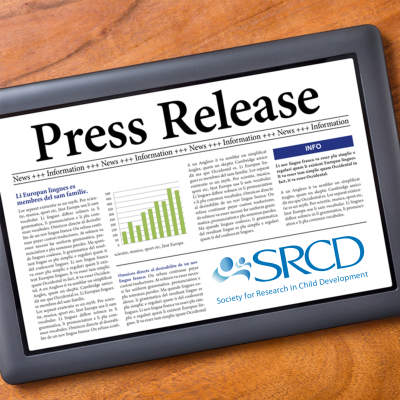Adolescents’ Fun Seeking Predicts Both Risk Taking and Prosocial Behavior
PRESS RELEASE / CHILD DEVELOPMENT: Embargoed for Release on August 27, 2019
Research shows that risk-taking behaviors, such as binge drinking, may increase throughout adolescence. At the same time, so can prosocial behaviors (behaviors that involve doing good to benefit others). A new longitudinal study from the Netherlands sought to determine if these behaviors are related and whether certain brain regions can predict them. The study found that the two behaviors may be related and that both behaviors may be motivated by teenagers’ efforts to have fun.
The study was conducted by researchers at Leiden University and the University of North Carolina, Chapel Hill. It is published in Child Development, a journal of the Society for Research in Child Development.
“We sought to test the pathways that support adolescents’ development of rebellious and helpful behaviors,” explains Neeltje E. Blankenstein, a postdoctoral researcher at Leiden University, who was first author of the study. “Because adolescence is often associated with negative stereotypes, our findings provide a more nuanced view on adolescent development by focusing on the relation between risk taking and prosocial behavior.”
Researchers examined 210 youth who were part of the Braintime study, longitudinal research conducted in the Netherlands in 2011, 2013, and 2015. The participants were ages 8 to 25 years at the start of the study, ages 10 to 27 when they were surveyed the second time, and ages 12 to 29 when they were surveyed the last time. Participants completed questionnaires each time they were surveyed, reporting on how often they engaged in rebellious and prosocial behaviors. They also reported on their tendency to seek out fun or rewarding activities, and their social skills—specifically, empathy and social perspective taking, which the authors define as the ability to understand others’ viewpoints (e.g., understanding both sides when two peers disagree).
Each time they were surveyed, the participants had a magnetic resonance imaging scan to measure the maturation of two brain regions—the nucleus accumbens and the medial prefrontal cortex—to determine whether these areas, which are important for risk taking and prosocial behavior, predicted the behaviors. The final time they were surveyed, participants reported on their rebellious or risk-taking behaviors, such as getting drunk and smoking, and on their prosocial behaviors, such as helping and comforting others.
The researchers found that:
- Rebelliousness increased from early adolescence to late adolescence before declining into adulthood, and prosocial behavior peaked in mid- to late-adolescence.
- Rebellious behavior and prosocial behavior were positively related to one another, even when controlling for age—that is, the more risk-taking behavior an adolescent showed, the more likely he or she was to behave prosocially.
The study also found that:
- More prosocial behavior was predicted by more empathy and greater long-term increases in perspective taking.
- More risk-taking behavior was predicted by greater increases in what the authors termed fun seeking—the tendency to seek out fun and exciting activities.
- At the same time, this fun-seeking trait also predicted more prosocial behavior, suggesting that fun seeking leads some adolescents to develop risk-taking behavior and others to develop prosocial behavior. This suggests that the same developmental processes may result in both types of behaviors, the authors note. Fun seeking also predicted a combination of high risk taking and high prosocial behavior, indicating that some adolescents are prosocial risk takers.
- The study pointed to some evidence that faster adolescent brain development (i.e., faster maturity) of the medial prefrontal cortex predicted less rebellious behavior. Activation of this region has been found to relate to risk taking, and this study showed that faster long-term structural development of this region also predicts risk taking.
Among the study’s limitations, the authors acknowledge, are that their questionnaires measured only behaviors of interest to the study and did not look at risk taking and prosocial behavior in the lab or in real life. They recommend that follow-up studies test a wider range of rebellious and helpful behaviors and include experiments in the lab. In addition, because the questionnaires relied on self-reports, the authors say they may be biased by social desirability, that is, by participants answering in ways they thought would make them look better.
“Our study suggests that fun seeking may be a trait that leads to diverse aspects of adolescent development, and that adolescence is a time of both vulnerabilities—seen in risk taking—and opportunities—seen in helping behaviors,” according to Eva H. Telzer, associate professor of psychology and neuroscience at the University of North Carolina, Chapel Hill, who co-led the study. “It also suggests that risk taking may serve positive goals, for instance, when adolescents take risks to help others.”
The study was funded by the European Research Council and Leiden University.
###
Summarized from Child Development, Behavioral and Neural Pathways Supporting the Development of Prosocial and Risk-Taking Behavior Across Adolescence by Blankenstein, NE (Leiden University), Telzer, EH (University of North Carolina, Chapel Hill), Do, KT (University of North Carolina, Chapel Hill), van Duijvenvoorde, ACK (Leiden University), Crone, EA (Leiden University). Copyright 2019 The Society for Research in Child Development, Inc. All rights reserved.
Contact Information:
Jessica Efstathiou
Society for Research in Child Development
202-800-3255
jefstathiou@srcd.org


